 Winter 2023 Update
Winter 2023 Update
AutoAquaponics Progress From Winter of 2023
This quarter, AutoAquaponics made strides in all aspects of our project and welcomed David Kim and Emi Saegusa to our team. We also continued our involvement in community education by giving a tour of the system to middle and high schoolers from the Chicagoland area as a part of Society of Women Engineers’ (SWE) Career Day for Girl event. Our team members showed them everything from the plumbing system we built to our software platform, which many of our visitors were especially excited about. We hope to impart to them that engineering is for everyone and demonstrate the importance of diversity in science with our own various backgrounds and identities. Read more about AutoAquaponics’ involvement in SWE’s Career Day for Girls at McCormick’s recent article here .
Our plumbing and software team representatives (Hannah and Talia) giving a presentation of our system:
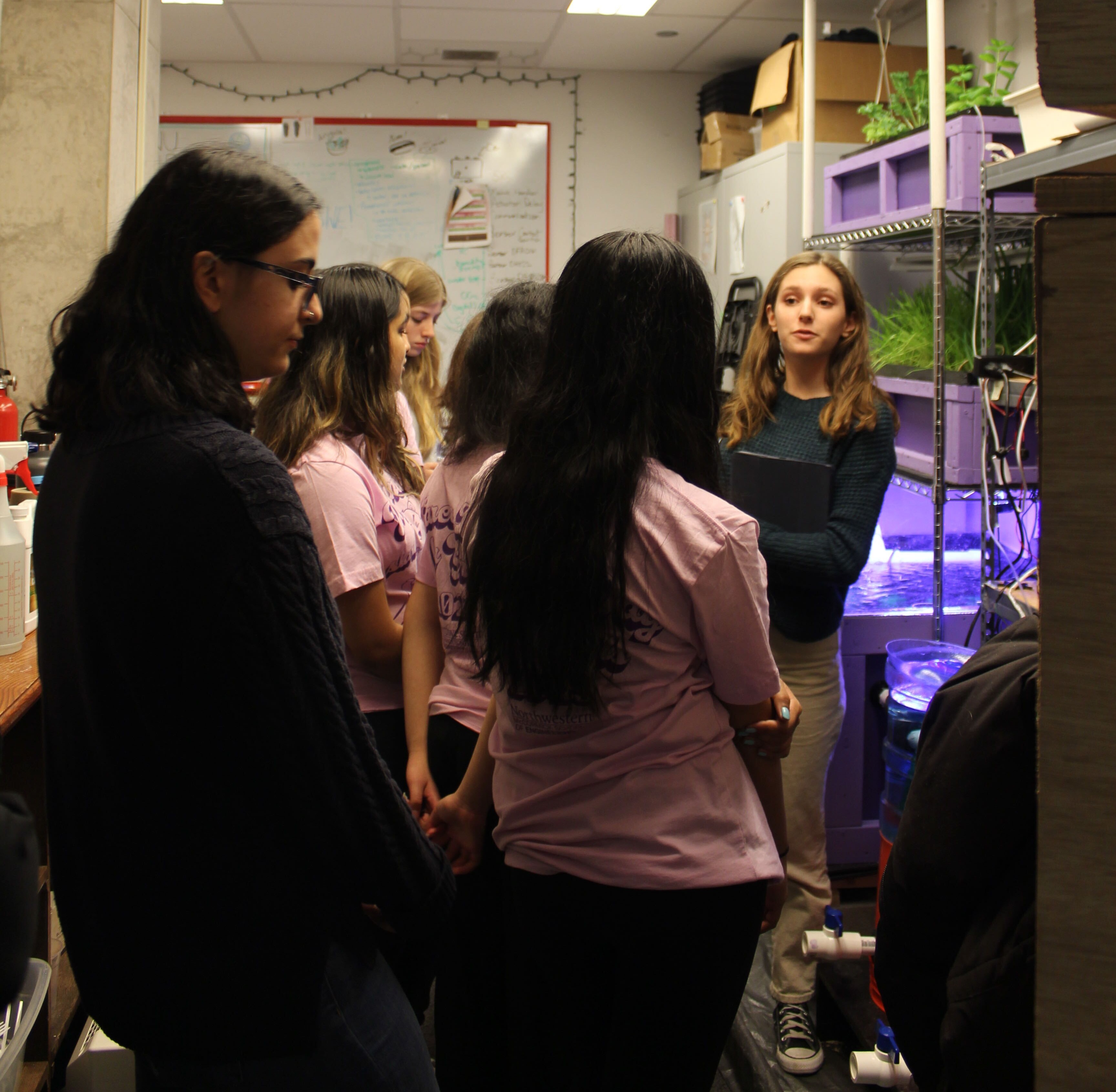
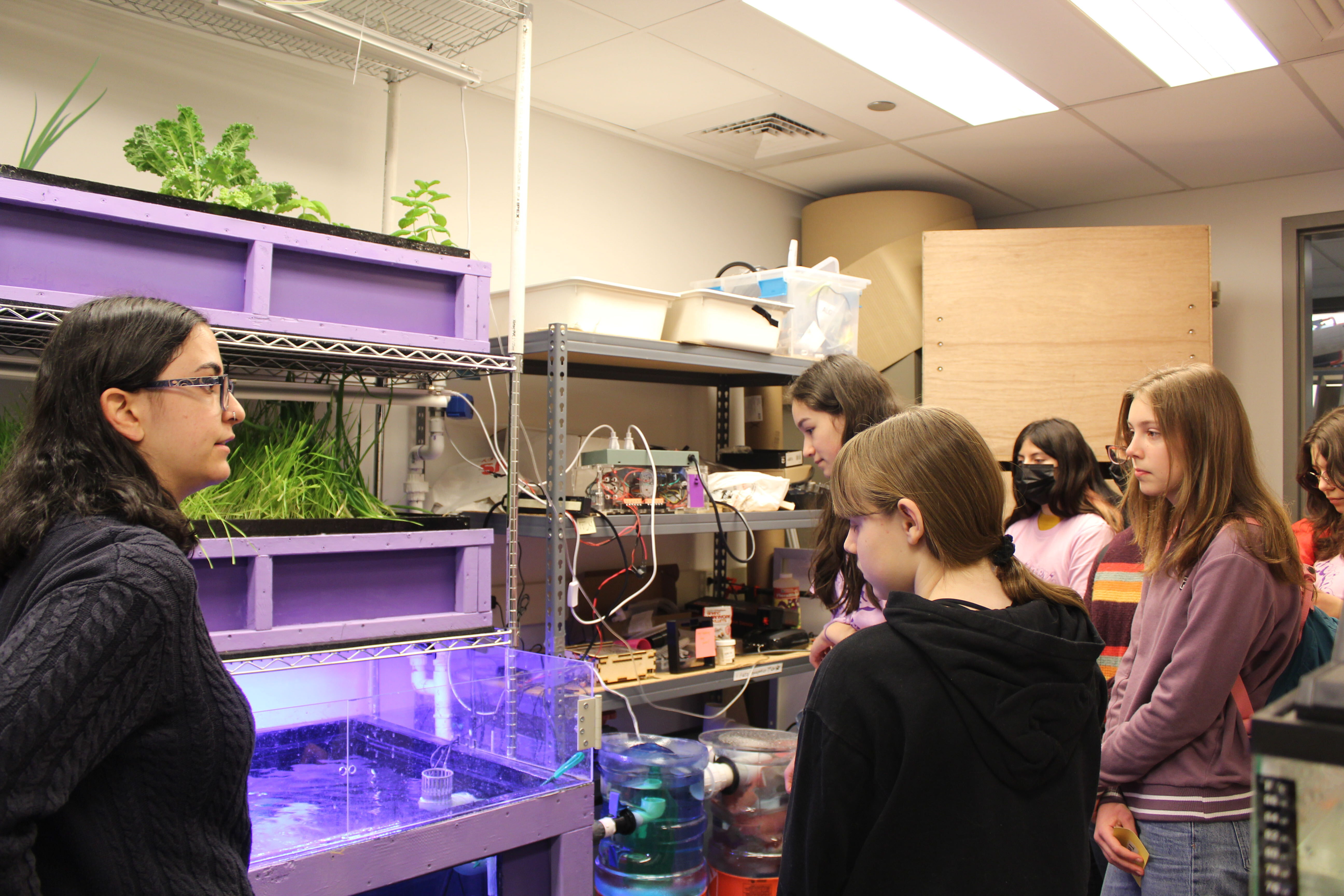
AutoAquaponics is also honored to receive Northwestern community’s recognition this quarter by accepting the Wildcat Impact Award for Discovery . Our current Project Manager (Bill Yen) was selected for this award among the entire student body for his work on starting AutoAquaponics over the pandemic and transferring his leadership and engineering skills over to the next generation of student leaders. Our incoming group of leaders will be Marcos Sanchez and Lester Tai (AutoAquaponics Co-Project Managers), Kyan Shlipak (Plumbing Lead), Yanni Wilcox (Electronics Lead), Andre Chen (Software Lead), and Eduardo Andrade (Biology Lead).

On the project side, our software team focused on improving the security of our web app by implementing website login and authentication via Firebase. This includes secure writes for all of the developed pages on our control panel. They also improved our website's mobile performance and set up Google Analytics to monitor traffic so we can better understand how to improve our UI design. Next quarter, we plan to revamp the home page by introducing an interactive diagram of our AutoAquaponics system in place of the static image right now.
Mobile view of the dashboard:

As for electronics, we are in the process of replacing our current ultrasonic distance sensor with a more robust product that can sense water levels without getting corroded over time. We also continued our work in designing our electronics box PCB and fully reworked our outlet box code to get it ready for implementation. Some of our members began designing a window-cleaning robot, which we hope to use to keep our fish tank's front glass panel algae-free. We got the encoder working and fitted the motor shaft to our 3D-printed rim, and our next steps will be to laser-cut holders for magnets to sit in so the robot can stay attached to the glass. Winter Quarter likewise marked the official end to our fish feeder team's time in Northwestern's Interdisciplinary Design course, and they ended the project strong by creating a new prototype fish feeder featuring a custom-designed PCB that allows the feeder to actuate motors and record how much food was being fed with high degrees of accuracy.
Our members working on the outlet box:

Soldering components to the custom fish feeder PCB using a microscope:

Our plumbing team put their efforts into 3D printing a better intake screen for the solids lifting overflow (SLO) and also modifying the membrane filtration tank by installing a bracket to hold the filtering membrane. They also prototyped a new custom-designed bell siphon for the lower grow bed in order to improve flow and increase the water level in the grow bed so that seedlings can grow faster.
Waterproofing and removing supports from the 3D printed bell siphon:


Members getting laser-cutter trained and then applying their new skills to manufacture brackets for the membrane filter:





Some unfortunate development occurred on the biological side of AutoAquaponics. Namely, our fish became infected with camallanus worm, which is a type of intestinal parasite that will eventually starve the fish of nutrients and kill them. See the red worms exiting their recently deceased host in the picture below:
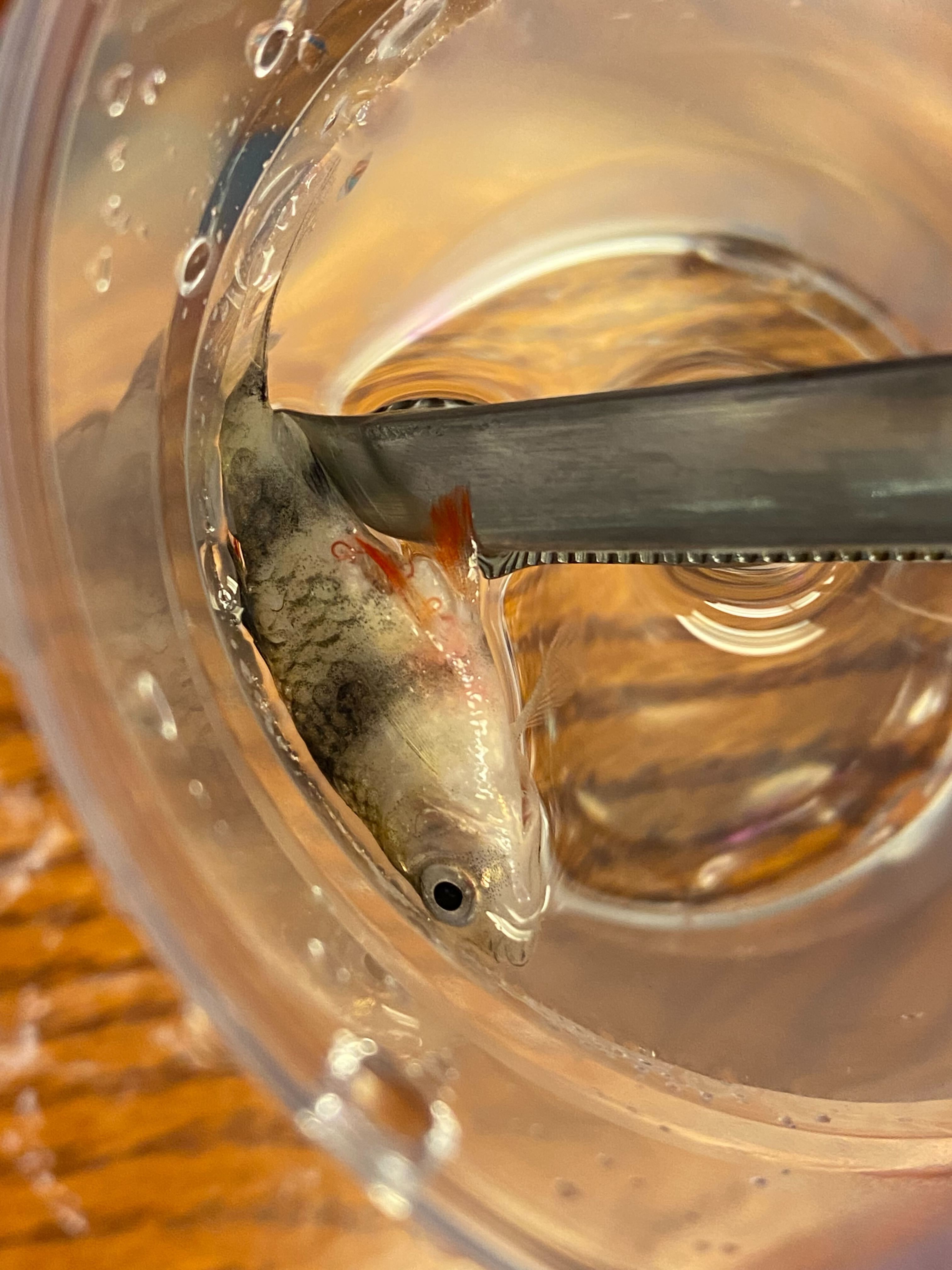
To combat this, we are dosing fenbendazole and levamisole in the form of medicated fish food, both of which are known to kill nematodes. The biology team spent most of their efforts this quarter trying to cure and save as many fish as we can, as camallanus worm is especially difficult to get rid of since they are unaffected by medication in the water. This means that if the fish stops eating due to the sickness, it becomes impossible to kill the worms.
Our biology team member putting medicated fish food into the commercial automatic fish feeder we use:
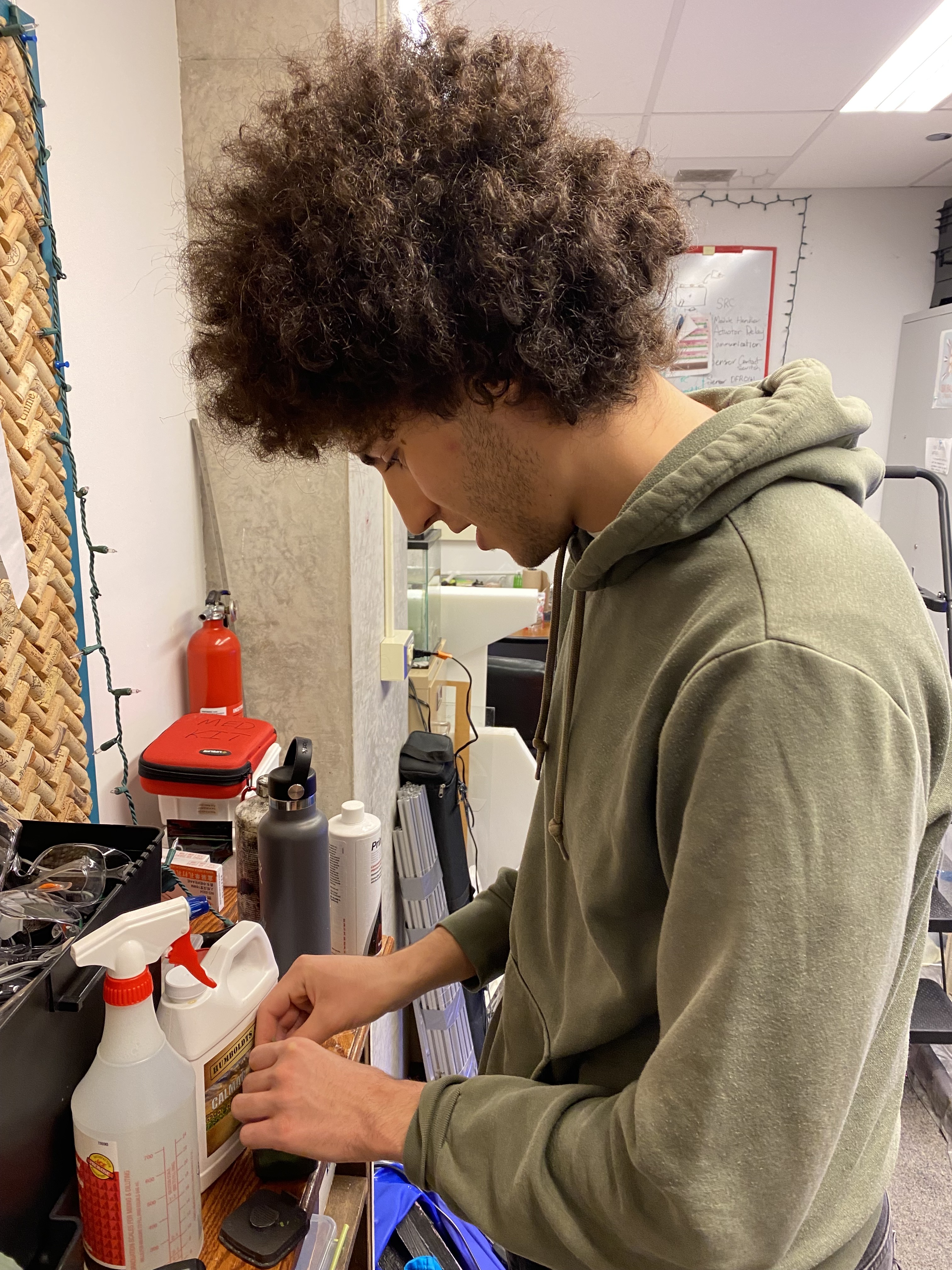
The parasites have mostly only affected our smaller fishes (tiger barbs and mollies), and larger fish like the Raphael catfish here seemed fine:
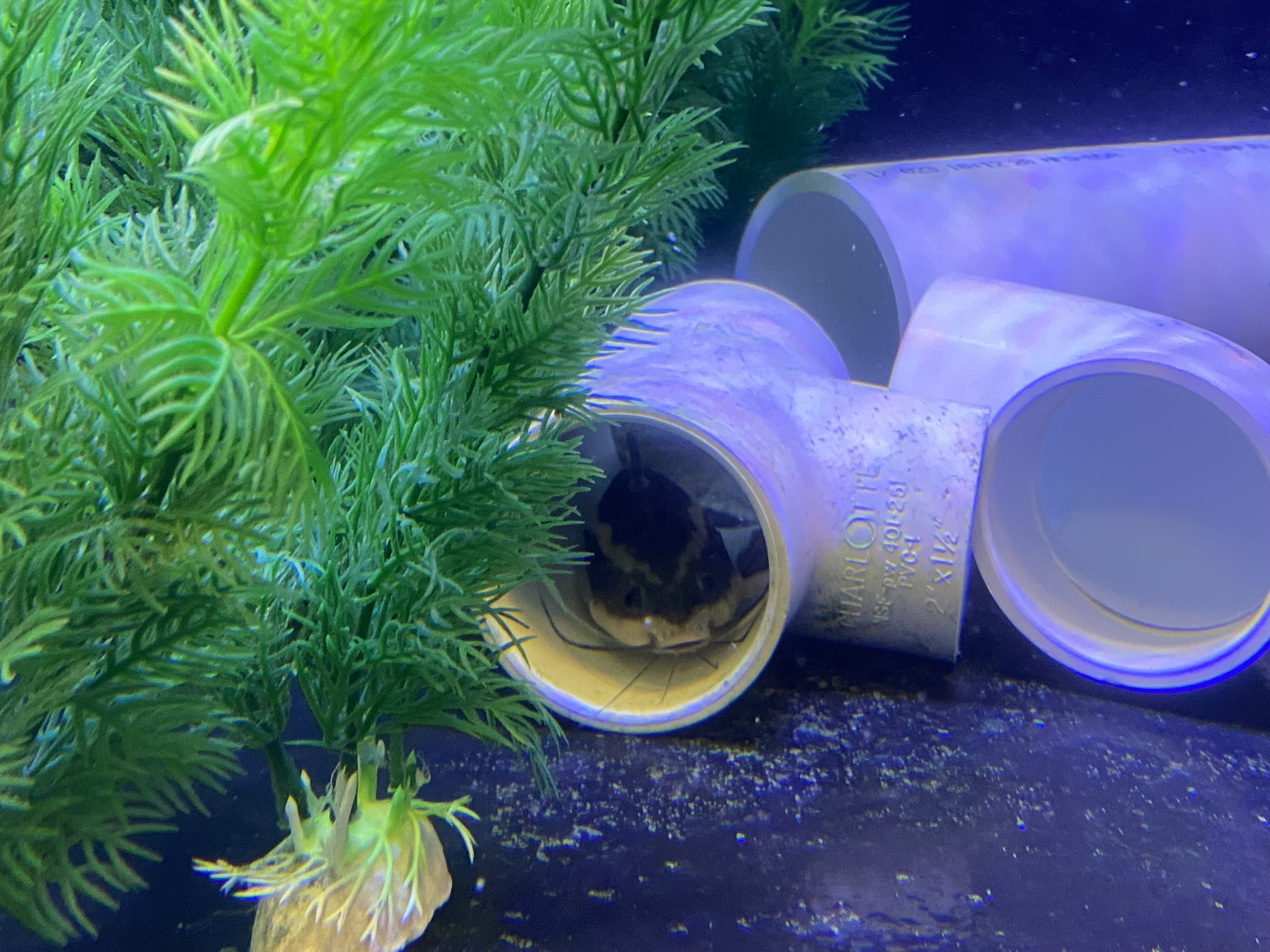
We also continued to grow our plant produce and added mint and spring onion to our crop list:
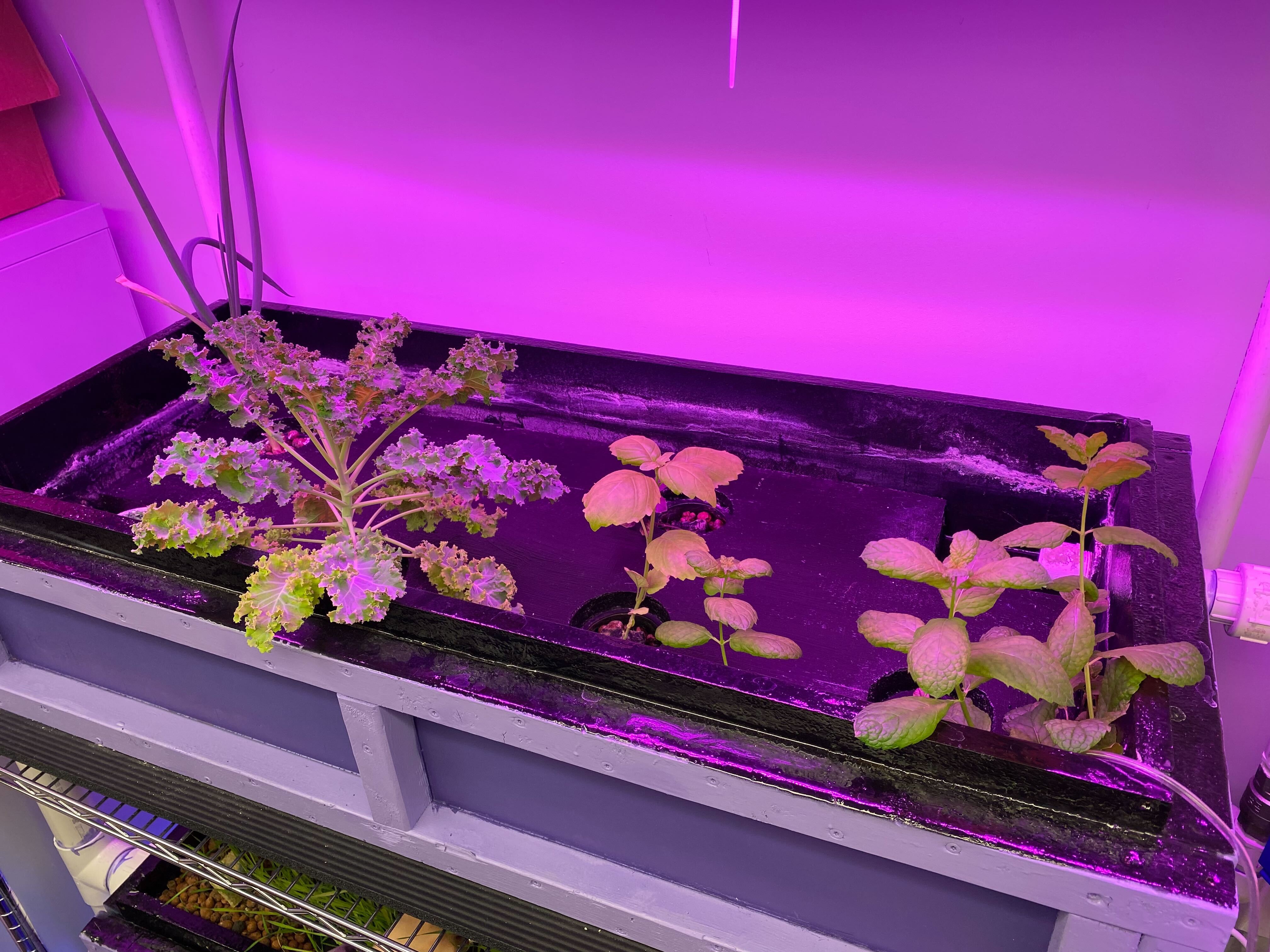
At the start and end of Winter Quarter, AutoAquaponics hosted harvest day socials for ESWNU to turn the plants we grew into delicious food and share them with the whole club. Here are some pictures of our team processing our produce into wheatgrass smoothies, mint creme brulee, and scallion pancakes:
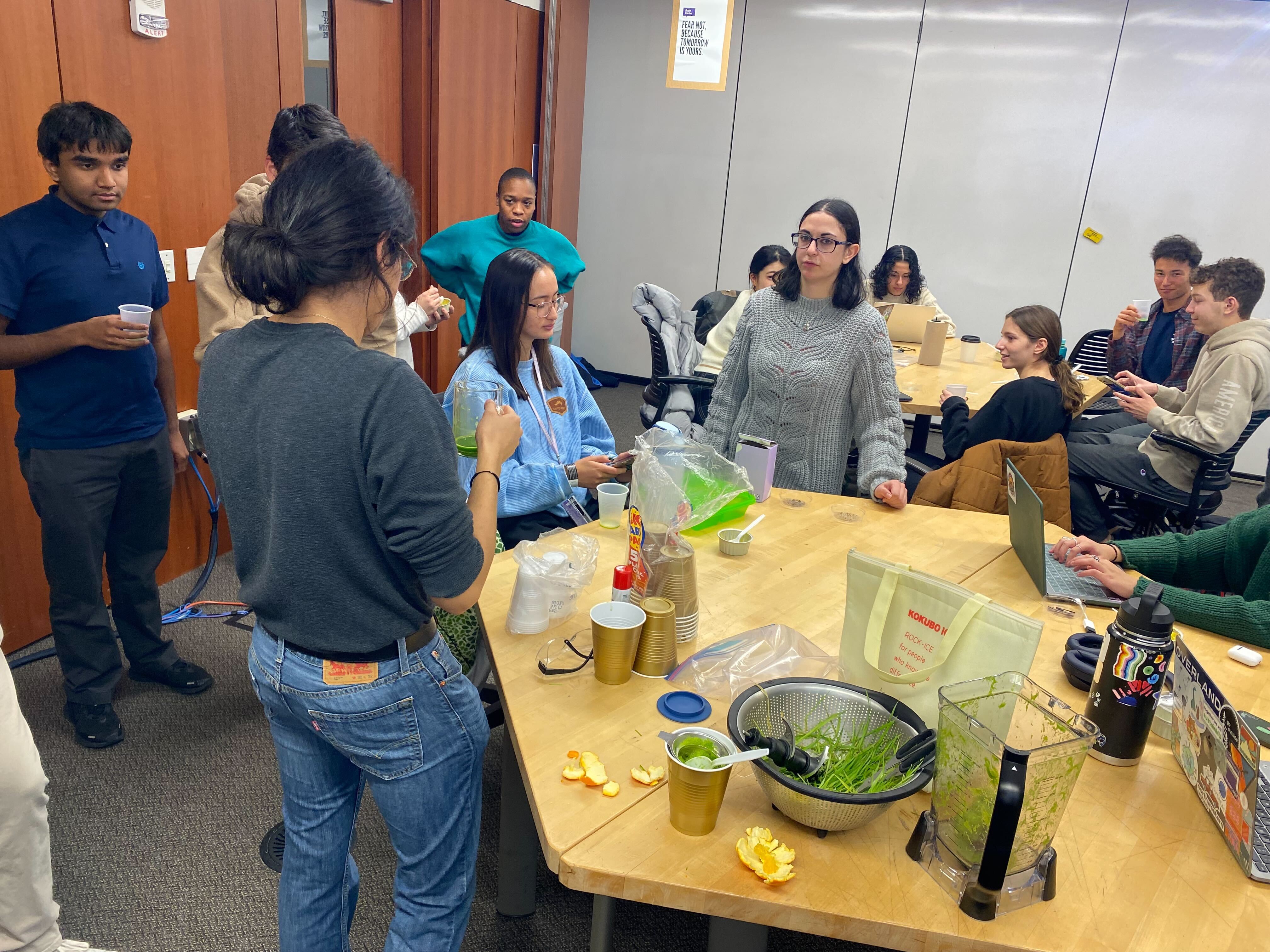
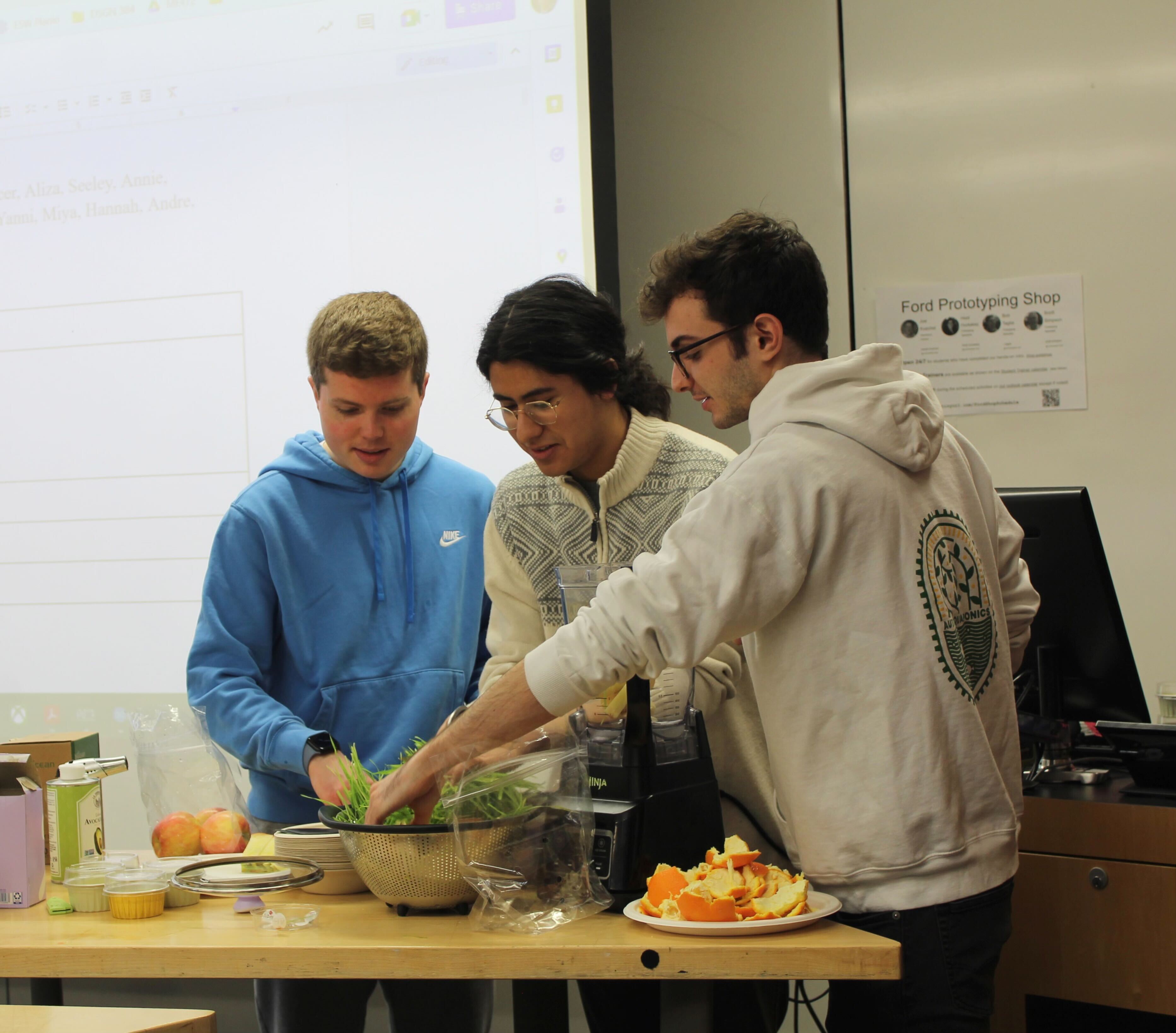
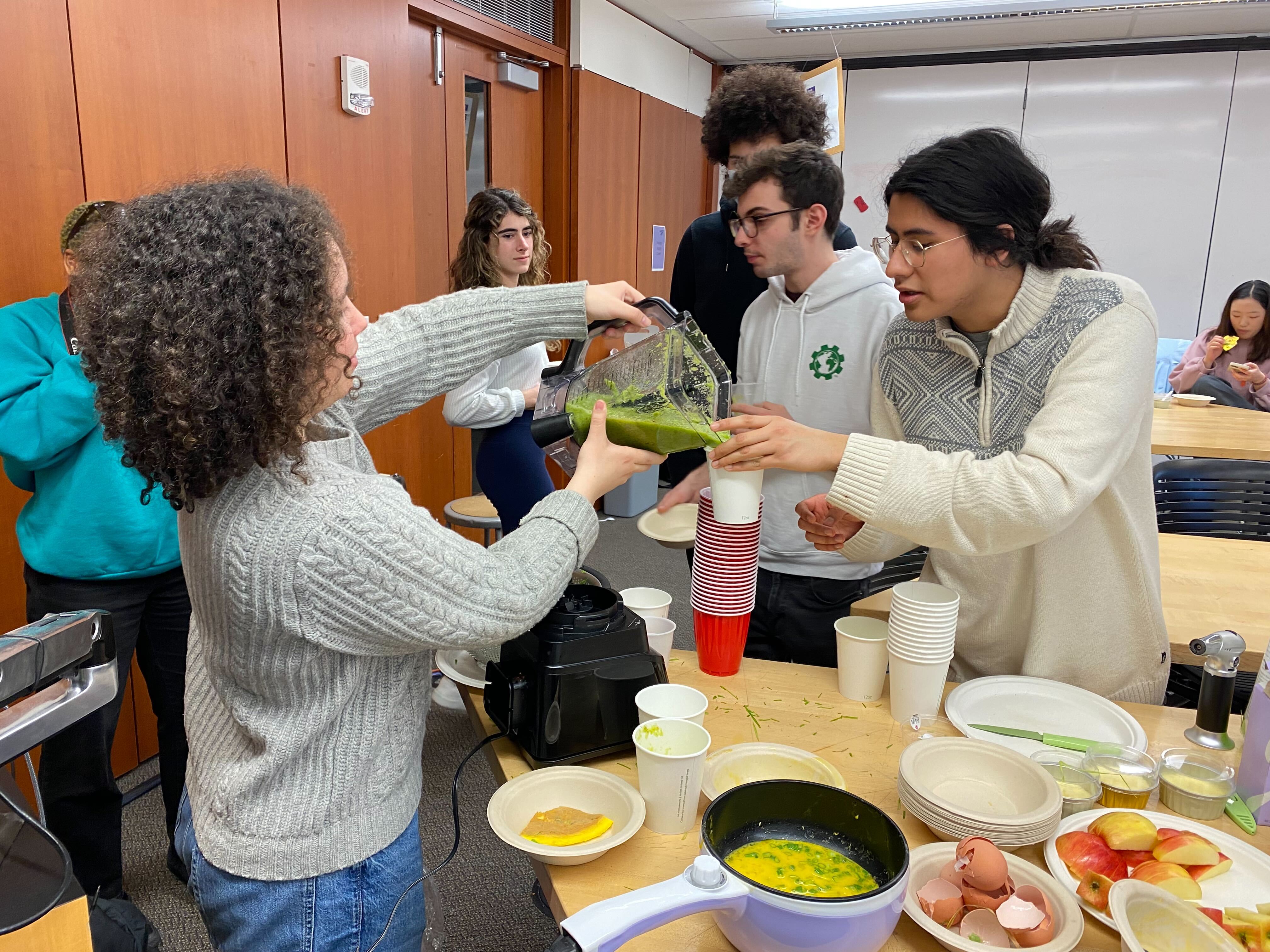
And of course, we composted all of our waste at the designated bins run by Cats Who Compost :
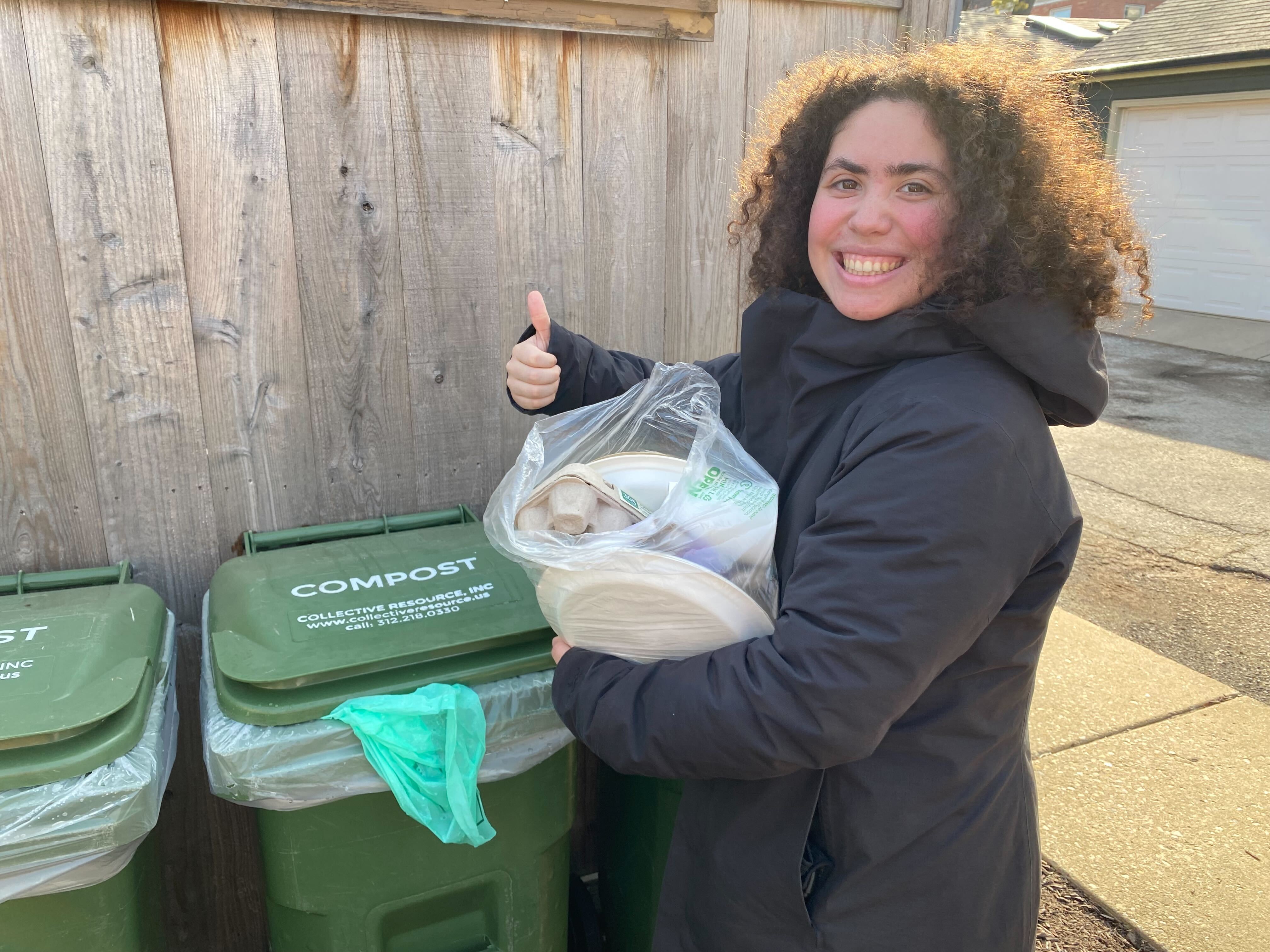
That's all for this quarter, thank you so much for your continuous support, and stay tuned for more updates from AutoAquaponics in the Spring!
Message From the Writer
Hi there! I'm Bill. This is the last blog post that I will do as the founder and Project Manager of AutoAquaponics since we are transitioning to new leadership in the Spring so I can (finally) graduate. To our dear readers (whoever you are), I want to personally thank you for reading this blog and keeping up to date with our project. I also want to thank all of my ESWNU teammates (past and present) for sticking with me and spending countless hours building an indoor farming system just because it’s “cool”. Because of them, we were able to turn this simple idea into a fully working system that improves our understanding of aquaponics and teaches children from the Chicagoland area about sustainable agriculture. When I started AutoAquaponics 3 years ago with just 1 other person on Zoom and a Raspberry Pi, I never thought it could’ve had this much impact on Northwestern and become the beautiful community it is now. I was initially motivated by my curiosity and drive to do something different in sustainability, but eventually I realized what made me step through the door of our meeting room week after week were the faces behind it, not the prototypes or circuits we built. It has been a privilege and a gift to lead such an amazing team to tackle this incredibly complex and interdisciplinary project, and seeing younger members’ eyes light up with excitement as they study our fish and the systems we designed to support them has been nothing short of magical. There is still more work to be done with AutoAquaponics, but I know the future is in good hands with our excellent group of new Project Managers and Sub-Team Leaders, many of whom I call my friends. It has been a crazy, rewarding, and at times, difficult ride, but I’m grateful for all of it because of how it shaped me as a person, leader, and engineer for a sustainable world. ESWNU - thanks for the last 4 years, and I love you all <3
Signing off,
Bill Yen
Comments